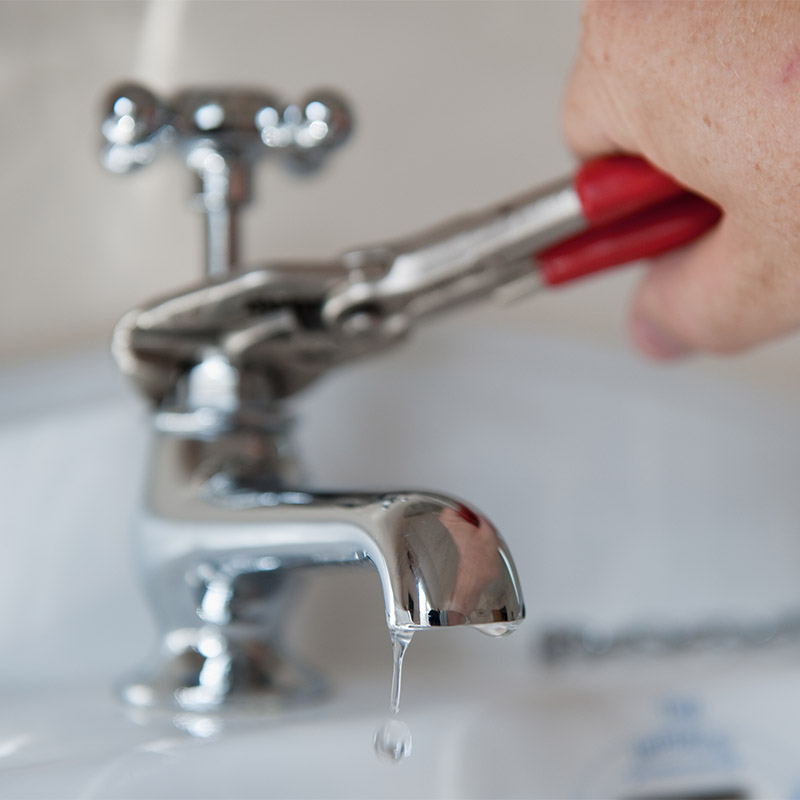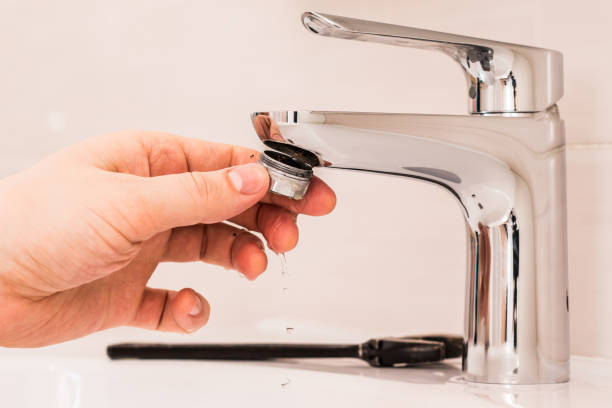When It's Essential to Resolve a Broken Faucet
When It's Essential to Resolve a Broken Faucet
Blog Article
Almost everyone maintains their personal idea about What Causes Leaky Faucets & How To Fix Them.

Dripping faucets may appear like a small inconvenience, but their effect exceeds simply the aggravation of the sound. From wasting water to incurring unneeded economic expenses and health and wellness threats, overlooking a leaking faucet can cause numerous effects. In this write-up, we'll look into why it's crucial to address this common home issue quickly and efficiently.
Waste of Water
Environmental Effect
Leaking faucets contribute considerably to water wastage. According to the Environmental Protection Agency (EPA), a single tap leaking at one drip per second can squander more than 3,000 gallons of water per year. This not only strains water sources yet additionally influences environments and wild animals based on them.
Financial Costs
Increased Water Costs
Past the environmental impact, dripping taps can blow up water expenses significantly. The built up wastage with time equates into higher energy costs, which could have been avoided with prompt repair services.
Prospective Home Damage
In addition, extended dripping can bring about damage to fixtures and surface areas surrounding the tap. Water buildup can trigger discoloration, rust, and even architectural problems if left unattended, causing additional fixing expenses.
Health Problems
Mold and Mold Growth
The consistent existence of moisture from a trickling faucet develops an optimal setting for mold and mold growth. These fungis not only jeopardize indoor air high quality but likewise pose health and wellness risks, especially for individuals with respiratory problems or allergies.
Waterborne Illness
Stationary water in leaking taps can become a breeding place for bacteria and other virus, enhancing the threat of waterborne diseases. Impurities such as Legionella bacteria prosper in stationary water, potentially causing serious health problems when consumed or inhaled.
DIY vs. Specialist Repair
Advantages and disadvantages of DIY Repair Work
While some might attempt to fix a leaking faucet themselves, do it yourself repairs include their own set of difficulties. Without appropriate knowledge and devices, DIY efforts can exacerbate the problem or cause insufficient repair work, lengthening the problem.
Advantages of Hiring a Professional Plumber
Employing a specialist plumber ensures that the underlying reason for the leaking tap is resolved properly. Plumbings have the expertise and equipment to diagnose and repair faucet issues effectively, saving time and reducing the danger of additional damages.
Step-by-Step Overview to Repairing a Dripping Faucet
Tools Called for
Before attempting to repair a leaking tap, collect the essential devices, consisting of a flexible wrench, screwdrivers, substitute parts (such as washers or cartridges), and plumber's tape.
Common Faucet Issues and Their Solutions
Identify the type of tap and the certain problem triggering the drip. Typical problems include damaged washing machines, rusty valve seats, or defective O-rings. Refer to manufacturer guidelines or on-line tutorials for step-by-step guidance on repairs.
Safety nets
Normal Maintenance Tips
To prevent dripping taps, do routine maintenance such as cleansing aerators, checking for leaks, and changing worn-out parts quickly. Additionally, consider mounting water-saving gadgets or upgrading to extra effective fixtures.
Relevance of Prompt Fixes
Dealing with dripping faucets as quickly as they're discovered prevents more water waste and potential damages, ultimately conserving both water and money in the future.
Effect On Home Value
Perception of Well-Maintained Residential Property
Maintaining a property in good condition, consisting of addressing upkeep problems like dripping taps, boosts its viewed worth and value amongst potential purchasers or tenants.
Impact on Resale Worth
Residences with well-maintained plumbing fixtures, consisting of faucets, command higher resale worths in the real estate market. Attending to trickling faucets can add to a favorable impression during building assessments and arrangements.
Environmental Obligation
Specific Payment to Conservation
Taking obligation for dealing with dripping faucets lines up with wider initiatives towards water conservation and environmental sustainability. Every person's activities jointly make a significant effect on protecting priceless sources.
Sustainable Living Practices
By prioritizing prompt repair work and embracing water-saving routines, people add to sustainable living practices that benefit both present and future generations.
Final thought
Attending to a trickling tap goes beyond mere benefit; it's an important step toward saving water, minimizing economic prices, and guarding wellness and property. Whether through DIY repair work or expert help, acting to take care of leaking taps is a little yet impactful method to promote responsible stewardship of resources and contribute to a much healthier, extra lasting future.
How to Fix a Dripping or Leaky Faucet
A leaking faucet is one of the most common problems that homeowners encounter, but it being commonplace doesn’t make it any less annoying. The constant drip drip drip of a leaking bathtub faucet, showerhead, or sink tap can disturb your home’s serenity. Left neglected, a dripping faucet can also result in higher water bills and discoloration or mold growth in your sink or plumbing fixtures.
Fortunately, you don’t have to be a trained plumber to know how to stop a dripping faucet. With some basic tools, replacement parts, and a little patience, leaky faucet repair is a breeze. In this article, we’ll explain what causes dripping faucets and how you can fix them.
What Causes a Leaking Faucet?
Kitchen and bathroom faucets come in all manner of designs, but most involve some combination of valves, O-rings, seals, and washers. The O-ring is usually the weakest link, but any one of these pieces can wear down over time. Heat, moisture, temperature fluctuations, minerals, mold, and movement can contribute to warping and corrosion, breaking the watertight seal. This just comes with the territory of being a homeowner. Everything is always subject to wear and tear, and some component parts of your appliances and fixtures need to be replaced on occasion. At least replacement O-rings are cheap!
More rarely, dripping faucets can be a symptom of excessively high water pressure. Were this the case in your home, you would probably notice that the leak is not isolated to one faucet. Water pressure issues are harder to resolve on your own. We recommend contacting a professional plumber if you suspect your water pressure is too high.
How to Fix a Dripping Faucet
Pipe wrench or monkey wrench Allen wrench set Screwdrivers Old towel or rag Shut off the water.
Before you do anything, you need to turn off the water to keep from drenching your kitchen or bathroom. You should find a valve under the sink and against the wall. Once you’ve turned this valve, try turning the faucet on to confirm that the water source has been cut off.
If you can’t locate your local valve for the faucet you’re working on, you can always shut off the water to the house at the main valve. Of course, this will prohibit anyone from using the sinks, showers, or toilets while you’re working on the faucet that’s giving you trouble.
Plug or block the drain.
You’ll be disassembling the faucet and removing some small bits of hardware. Plug the drain with a stopper or rag to avoid the possibility of a small screw falling into your P-trap.
Take apart the faucet assembly.
There are several varieties of kitchen and bathroom faucets, each with its own manner of assembly. For detailed instructions on how to disassemble your faucet, you can refer to the fixture’s manual or contact the manufacturer. If you know whether you have a ball, disc, cartridge, or compression faucet, you can find detailed schematics online.
In general, you need to begin by removing the faucet handles. You might notice a small screw that you’ll need to remove with a screwdriver or Allen wrench. If you don’t see any visible securing hardware, it’s likely hidden under a decorative cap that can be unscrewed or popped off with flathead screwdriver.
Remove each piece methodically, consulting a schematic when necessary. Take notes or arrange the pieces in such a way to make it easier to correctly reassemble the faucet later.
Remove the cartridge.
Once you’ve removed the handles and securing hardware, you should be able to remove the valve cartridge or stem. Some cartridges will slide right out. Other faucet models will require you to loosen a nut with a pipe wrench before you can remove the valve stem.
Examine the exposed hardware.
With the cartridge or stem removed, inspect the component parts. Check the rubber O-rings for wear and tear. Also examine the seat washer for corrosion or other damage. These pieces are usually the responsible parties for a dripping faucet, but it’s worth inspecting the other component parts while you have the faucet disassembled.
Find replacement parts.
Once you’ve identified which faucet component has failed, find an identical replacement. Your local hardware store should have O-rings, seat washers, and other standard components in stock. If you have a luxury or uncommon faucet, you may have to contact the manufacturer for a replacement part.
It’s a good idea to take your old parts with you to the hardware store so you can compare them with the store’s inventory and be sure you’re purchasing the correct replacement.
Reassemble the faucet.
With your new parts in hand, reconstruct the faucet and handles. Don’t be tempted to overtighten screws or nuts. You might think this could create a better seal, but it can instead damage or bend a delicate part of the assembly and create a new problem for you.
Turn on the water and test the faucet.
The only thing left to do is test your work. Unplug the sink, turn the water back on, and try the faucet. Congratulate yourself on a job well done!
https://www.libertyhomeguard.com/how-to-fix-a-dripping-or-leaky-faucet/

We are very inquisitive about 4 Common Reasons for a Leaky Faucet and I am assuming you liked our piece. If you enjoyed our article kindly remember to share it. Thanks for being here. Don't hesitate to pay a visit to our site back soon.
Report this page